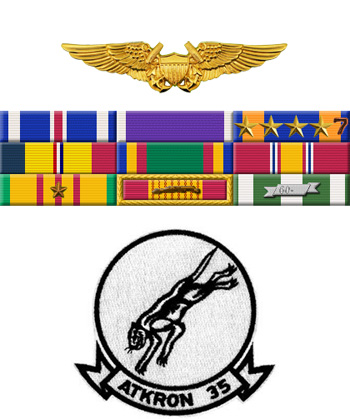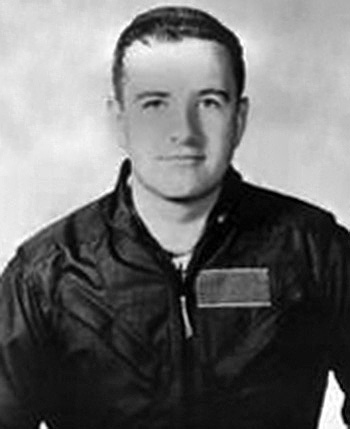
|
James Kelly Patterson |
 |
|||
| Rank, Service | ||||
Lieutenant Commander O-4, U.S. Navy |
||||
| Veteran of: | ||||
|
||||
| Tribute: | ||||
Kelly Patterson was born on July 14, 1940, in Long Beach, California. He entered the U.S. Naval Academy in June 1959, and graduated with a commission as an Ensign in the U.S. Navy on June 5, 1963. After completing training at Fleet Training Center San Diego, California, Ens Patterson served aboard the destroyer USS Renshaw (DD-499) from August 1963 to September 1964. He then attended Naval Flight Officer training from September 1964 to April 1965, followed by RA-5 Vigilante training with RVAH-3 from April to June 1965, and A-6 Intruder Navigator/Bombardier training with VA-42 from June to August 1965. Lt Patterson served as an A-6 Bombardier/Navigator with VA-35 at NAS Oceana, Virginia, from August 1965 to November 1966, and then deployed aboard the aircraft carrier USS Enterprise (CVAN-65) from November 1966 until he was presumed killed in action over North Vietnam on May 19, 1967. He was officially listed as Missing in Action until declared dead on April 16, 1974, but his remains have never been returned to the United States. |
||||
|
||||

